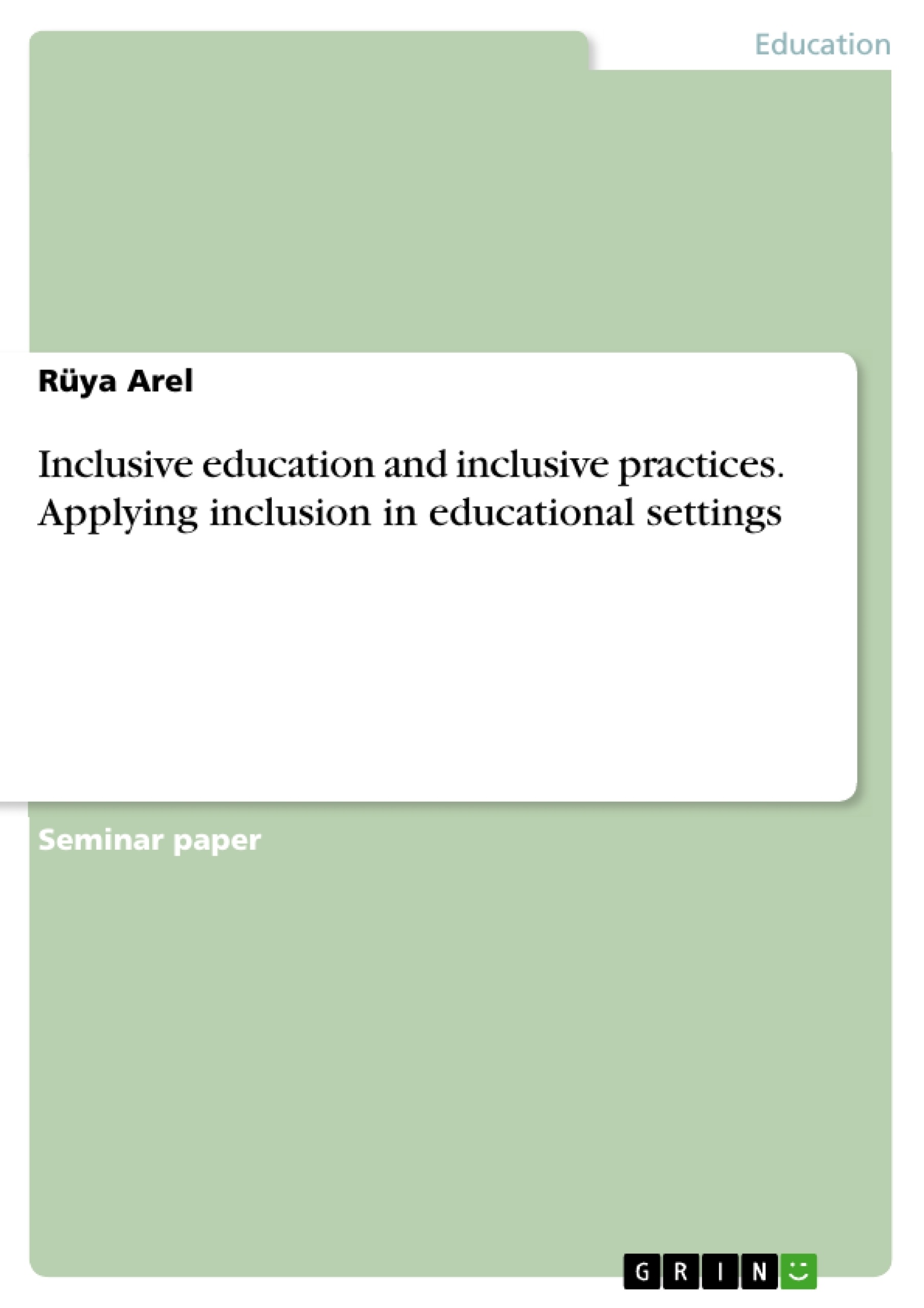In the course of this paper, the aim is to focus your attention on some key aspects about inclusive education and inclusive practices.
The question that arises upon the course of this paper is ‘To what extend can inclusive schools provide help for students with special needs and how can equity be implemented in education?’ which will be answered in the course of this paper.
Special education systems have developed in order to provide help for children with special educational needs. Including and educating children with special needs in mainstream schools is an important policy goal for many countries all over the world. The aim of educating disabled students in mainstream schools is to accept the rights of every individual and make it possible for them to have access to regular schools.
Inhaltsverzeichnis (Table of Contents)
- Preface
- Introduction
- Discussion of inclusive education in general
- What does 'inclusion' mean?
- Which group of people is in need of inclusive education?
- How to apply inclusion
- The teacher
- The school
- The setting
- The curriculum
- The correlation of inclusion and equity
- Using Equity audits to close achievement gaps
- Conclusion
- References
Zielsetzung und Themenschwerpunkte (Objectives and Key Themes)
This paper aims to explore key aspects of inclusive education and inclusive practices. It discusses the development of inclusive education, clarifies the meaning of 'inclusion', and examines how inclusion can be applied in school settings. The paper also explores the relationship between inclusion and equity.
- The development and changing landscape of inclusive education
- The definition and meaning of 'inclusion' in educational settings
- Strategies for applying inclusion in schools, including teacher, school, setting, and curriculum factors
- The connection between inclusion and equity in education
- The role of diversity and acceptance in creating inclusive educational environments
Zusammenfassung der Kapitel (Chapter Summaries)
- Preface: This section introduces the paper's topic and discusses the challenges faced by teachers in ensuring equal opportunities for all students. It emphasizes the importance of inclusive education as a means of promoting full participation and engagement of all students.
- Introduction: This chapter outlines the historical development of special education systems and the shift towards inclusive education. It defines inclusive education as a philosophy that celebrates diversity and aims to educate all students in mainstream schools. The chapter also discusses the changing perspectives on special educational needs and the challenges faced by students with disabilities in accessing regular education.
- Discussion of inclusive education in general: This chapter explores the meaning of 'inclusion' and explains its ethical and social implications. It also examines the diverse student population and the importance of equitable opportunities for all learners. The chapter further discusses the differences in approaches to inclusive education across countries and the reasons for these variations.
- How to apply inclusion: This chapter focuses on the practical implementation of inclusive practices in school settings. It examines the roles and responsibilities of teachers, schools, the educational setting, and the curriculum in promoting inclusive education. The chapter emphasizes the importance of creating supportive environments that meet the needs of all learners.
- The correlation of inclusion and equity: This chapter explores the relationship between inclusion and equity in education. It discusses the use of equity audits to identify and address achievement gaps between students with and without disabilities. The chapter emphasizes the importance of ensuring fair and equitable opportunities for all students, regardless of their individual characteristics.
Schlüsselwörter (Keywords)
This paper focuses on the key concepts of inclusive education, inclusive practices, equity, diversity, special educational needs, and equitable opportunities in education. It examines the challenges of integrating students with disabilities into mainstream schools, promoting a culture of acceptance and respect, and ensuring that all students have access to quality education.
- Citation du texte
- Rüya Arel (Auteur), 2018, Inclusive education and inclusive practices. Applying inclusion in educational settings, Munich, GRIN Verlag, https://www.grin.com/document/1158308



